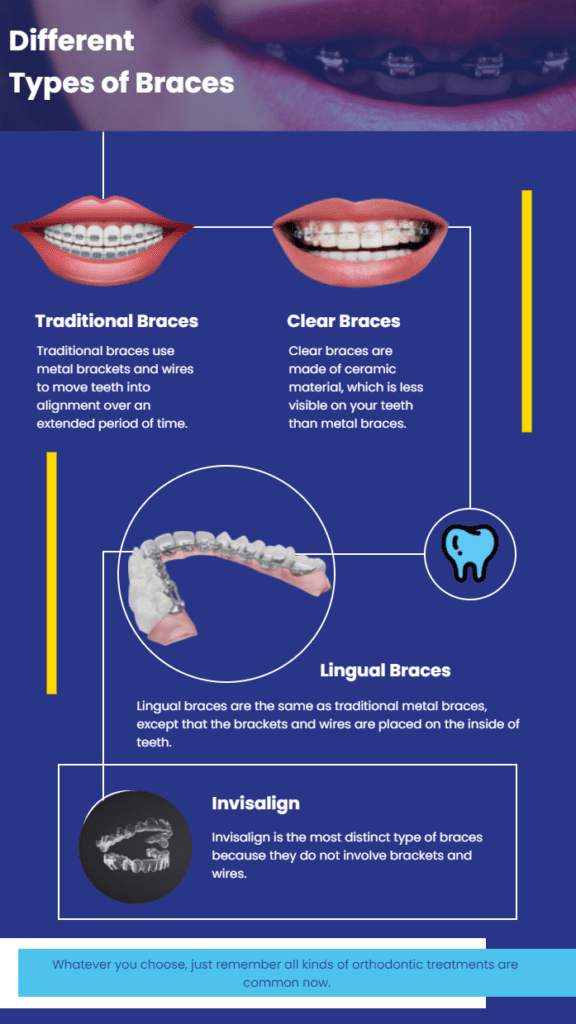How Cumming Orthodontics Can Transform Your Smile with Invisalign and Braces
How Cumming Orthodontics Can Transform Your Smile with Invisalign and Braces
Blog Article
Comprehensive Overview to Orthodontics Procedures for Dealing With Dental Imbalances
Recognizing the details of each treatment, including their devices, advantages, and prospective disadvantages, is vital in making educated choices regarding one's orthodontic treatment. As we navigate through the comprehensive guide to orthodontic treatments for dealing with dental imbalances, the detailed information of each technique will unfold, losing light on the course towards a unified and useful dental positioning.
Orthodontic Procedures Summary

In enhancement to clear aligners and typical braces, orthodontists might likewise recommend various other treatments like headgear, palatal expanders, or retainers to address details positioning issues (cumming aligners). These treatments are tailored to every patient's one-of-a-kind needs and might involve a mix of therapies to accomplish the wanted results. Routine adjustments and surveillance are important components of orthodontic treatment to make certain development gets on track and to make any needed modifications along the means. By undertaking orthodontic treatments, clients can not just attain a straighter smile yet also boost their overall dental wellness and function.
Traditional Braces: How They Work
When thinking about orthodontic treatments for oral imbalances, conventional braces stand out as a reliable technique for dealing with teeth placing. Conventional dental braces are composed of brackets, cords, and bands that collaborate to use continuous stress on the teeth, progressively moving them right into the preferred alignment. The braces are affixed to the teeth using an unique adhesive, and the cables are threaded through the braces. By changing the stress of the cables, orthodontists can control the instructions and force used to each tooth, leading them right into appropriate alignment gradually.
As pressure is applied to the teeth through the braces, the bone surrounding the teeth is reshaped to sustain the brand-new tooth placements. People will need regular adjustments at the orthodontist's office to guarantee the braces continue to apply the correct pressure for effective teeth movement.
Unnoticeable Aligners: Benefits And Drawbacks
These clear, tailor-made trays are essentially undetectable when used, making them an appealing alternative for people seeking an extra cosmetically pleasing orthodontic treatment. Patients can get rid of the aligners before consuming or brushing their teeth, lowering the danger of food getting stuck in the device and simplifying the cleansing process.

Surgical Orthodontic Options
Surgical treatments in orthodontics existing sensible alternatives for addressing complex dental misalignments that may not be effectively dealt with with traditional orthodontic treatments. While standard dental braces and undetectable aligners can deal with several orthodontic concerns, particular situations call for medical treatment to accomplish optimal results. Surgical orthodontic options are generally recommended for severe malocclusions, significant jaw discrepancies, and cases where the underlying bone structure needs modification to achieve proper alignment.
One common surgical orthodontic procedure is orthognathic surgical treatment, which entails rearranging the jaws to remedy functional issues such as trouble speaking or eating. This surgical treatment is typically carried out in collaboration with an orthodontist who aids straighten the teeth prior to and after the procedure. Surgical orthodontics may additionally include procedures to reveal affected teeth, remove excess periodontal tissue, or reshape the jawbone to develop a much more unified face account.
Prior to taking into consideration surgical orthodontic options, people undertake a detailed examination to establish the need and potential you can try these out advantages of such interventions. orthodontist. While surgical treatment might seem overwhelming, it can significantly boost both the function and appearances of the smile in cases where conventional orthodontic treatments fall short
Retainers and Post-Treatment Care

Post-treatment care involves complying with the orthodontist's instructions carefully. This might include appropriate dental health practices, going to follow-up visits, and putting on the retainers as suggested. Failure to abide by post-treatment care guidelines can cause relapse, where the teeth gradually relocate back in the direction of their initial positions. Consistent retainer wear, good oral hygiene, and routine dental examinations are crucial for keeping the results accomplished with orthodontic surgical procedure and ensuring the long-term stability of the fixed dental positioning.
Verdict
Finally, orthodontic treatments supply various alternatives for fixing dental misalignments. Conventional dental braces use steel braces and wires to move teeth right into proper placement. Unnoticeable aligners give an even more very discreet alternative yet may not be ideal for all cases. Surgical orthodontic options are available for extra severe misalignments. Retainers are frequently made use of post-treatment to keep the brand-new positioning. In general, orthodontic treatments can successfully improve oral health and visual appearance.
As we navigate via the extensive overview to orthodontic procedures for remedying dental misalignments, the intricate information of each approach will unravel, shedding what do dentists do light on the course toward a unified and functional dental placement. - cumming orthodontist
One of the most usual orthodontic treatments is the use of braces, which consist of steel brackets and wires that use gentle pressure to progressively move teeth right into the preferred position.When thinking about orthodontic therapies for oral imbalances, traditional braces stand out as a tried and true approach for dealing with teeth positioning. Additionally, unnoticeable aligners might not be ideal for intricate orthodontic issues that require more significant teeth motion, as they are normally advised for light to moderate cases. Retainers are customized orthodontic gadgets created to hold teeth in their remedied placements after the conclusion of orthodontic therapy.
Report this page